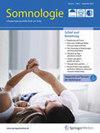Sleep apnea healthcare management in dynamically changing times
IF 0.5
Q4 CLINICAL NEUROLOGY
引用次数: 1
Abstract
Abstract Background Obstructive sleep apnea (OSA) is a common chronic disorder and an independent risk factor for several health issues, with a high prevalence estimated at 30% for men and 13% for women in Germany. Objective For both individual wellbeing and healthcare systems, efficient and effective diagnosis and treatment of OSA are essential. Actors and stations along the patient pathway that may strongly benefit from adoption of current and evolving digital methods and tools are to be identified. Materials and methods This work analyzes an OSA patient’s pathway through the German healthcare system, as well as current developments in health informatics and patient involvement. Potential benefits are identified and a patient-centric integrated digital health system is conceptualized. Results Digital health strategies of German and European governments emphasize the importance of connected healthcare for patient empowerment, efficient health systems, and innovations in healthcare. For OSA, in particular intersectoral sharing of health assessments and biosignal measurements can support physicians’ care and timely and adequate treatment. Furthermore, clinical decision-support systems including artificial intelligence may help in optimized patient-centric treatment by early detection of females suffering from OSA, OSA pheno- and endotypes, and patients at risk of abandoning treatments. However, bureaucratic and reimbursement barriers in legislation may slow down or even inhibit the implementation of a smart healthcare system. Conclusion Current trends in connected digital healthcare, wearables, data-driven decision support, and patient participation offer many opportunities for significantly improving healthcare for OSA. However, many technical, organizational, and regulatory challenges are to be faced.动态变化时代的睡眠呼吸暂停保健管理
背景:阻塞性睡眠呼吸暂停(OSA)是一种常见的慢性疾病,也是多种健康问题的独立危险因素,在德国,男性和女性的患病率分别高达30%和13%。目的对个体健康和医疗保健系统而言,高效、有效的OSA诊断和治疗至关重要。将确定可能从采用当前和不断发展的数字方法和工具中获益的患者路径上的参与者和站点。材料和方法本研究分析了一位OSA患者通过德国医疗保健系统的途径,以及健康信息学和患者参与的最新发展。确定了潜在的好处,并对以患者为中心的综合数字卫生系统进行了概念化。结果:德国和欧洲各国政府的数字健康战略强调了互联医疗对患者赋权、高效医疗系统和医疗创新的重要性。对于阻塞性睡眠呼吸暂停症,特别是部门间共享健康评估和生物信号测量可以支持医生的护理和及时和充分的治疗。此外,包括人工智能在内的临床决策支持系统可能有助于优化以患者为中心的治疗,通过早期发现女性OSA, OSA现象型和内源性,以及有放弃治疗风险的患者。然而,立法中的官僚主义和报销障碍可能会减缓甚至抑制智能医疗保健系统的实施。结论互联数字医疗、可穿戴设备、数据驱动决策支持和患者参与的当前趋势为显著改善OSA的医疗保健提供了许多机会。然而,许多技术、组织和监管方面的挑战将面临。
本文章由计算机程序翻译,如有差异,请以英文原文为准。
求助全文
约1分钟内获得全文
求助全文
来源期刊

Somnologie
CLINICAL NEUROLOGY-
CiteScore
2.10
自引率
28.60%
发文量
47
期刊介绍:
Die Zeitschrift Somnologie ist das offizielle Organ der Deutschen Gesellschaft für Schlafforschung und Schlafmedizin (DGSM), der Österreichischen Gesellschaft für Schlafmedizin und Schlafforschung (ÖGSM) und der Schweizerischen Gesellschaft für Schlafforschung, Schlafmedizin und Chronobiologie (SGSSC).
Auf der Basis von aktuellen, klinisch relevanten Forschungsergebnissen befasst sich die Somnologie mit der Ätiologie, Pathophysiologie, Differentialdiagnostik und Therapie der verschiedenen Schlafstörungen. Eine wissenschaftlich hochqualifizierte Analyse der Ätiologie, Pathophysiologie, Epidemiologie, Diagnose und Therapie verschiedener Schlafstörungen erfordert die Kooperation einer Vielzahl von medizinischen Fachdisziplinen. Durch die Zusammenarbeit von Vertretern aus den Bereichen der Epidemiologie, Humangenetik, HNO, Mund-, Kiefer- und Gesichtschirurgie, Innere Medizin, Pneumologie, Kardiologie, Gastroenterologie, Neurologie, Neurophysiologie, Physiologie, Psychologie, Pädiatrie und Pharmakologie erfüllt die Somnologie die multidisziplinären Anforderungen der Schlafforschung und Schlafmedizin. Besonderes Augenmerk liegt hierbei auch auf methodischen Neuerungen der Biomedizinischen Technik. Neben experimentellen oder klinischen Originalarbeiten und Übersichtsarbeiten werden Empfehlungen, Positionspapiere und Leitlinien der DGSM publiziert. Regelmäßig erscheinende Schwerpunktthemen und die Einrichtung einer CME-Rubrik in der Somnologie erfüllen den Aus- und Weiterbildungsanspruch dieser Zeitschrift und der beteiligten Fachgesellschaften.Auf eine ausgewogene Kombination von wissenschaftlichen Inhalten und praxisnahen Inhalten, die der Aus- und Weiterbildung dienen, wird bei der Zusammenstellung der einzelnen Ausgaben Wert gelegt. Based on current, clinically relevant research results, the journal Somnologie focuses on the etiology, pathophysiology, differential diagnostics and treatment of various sleep disorders.A scientific, comprehensive analysis of the various causes of sleep disorders requires the cooperation of several branches of medicine. Through the collaboration of specialists in the areas of epidemiology, human genetics, ENT, OMF, internal medicine, pneumology, cardiology, gastroenterology, neurology, neurophysiology, physiology, psychology, pediatrics, and pharmacology, Somnologie fulfills the multidisciplinary requirements of sleep research and sleep medicine. Special attention is paid to methodological innovations of biomedical engineering.In addition to experimental and original clinical articles, reviews, case reports, recommendations and guidelines of the DGSM are published. Focus issues and and CME-articles fulfill the continuing education requirements of this journal and the involved professional societies.A balanced combination of scientific content and articles fostering education in sleep medicine is provided in each single issue of Somnologie.
 求助内容:
求助内容: 应助结果提醒方式:
应助结果提醒方式:


